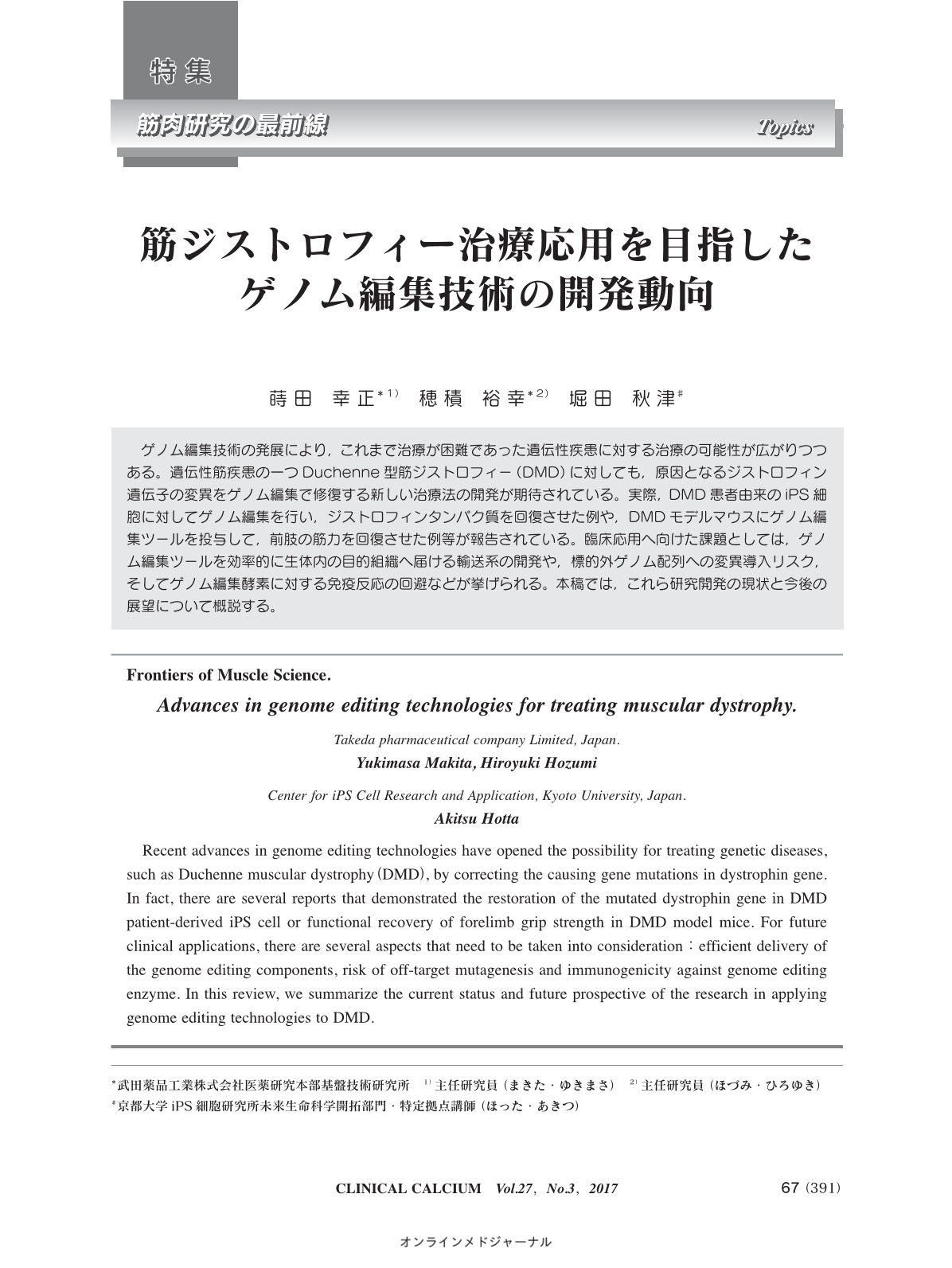Japanese
English
- 有料閲覧
- Abstract 文献概要
- 1ページ目 Look Inside
- 参考文献 Reference
ゲノム編集技術の発展により,これまで治療が困難であった遺伝性疾患に対する治療の可能性が広がりつつある。遺伝性筋疾患の一つDuchenne型筋ジストロフィー(DMD)に対しても,原因となるジストロフィン遺伝子の変異をゲノム編集で修復する新しい治療法の開発が期待されている。実際,DMD患者由来のiPS細胞に対してゲノム編集を行い,ジストロフィンタンパク質を回復させた例や,DMDモデルマウスにゲノム編集ツールを投与して,前肢の筋力を回復させた例等が報告されている。臨床応用へ向けた課題としては,ゲノム編集ツールを効率的に生体内の目的組織へ届ける輸送系の開発や,標的外ゲノム配列への変異導入リスク,そしてゲノム編集酵素に対する免疫反応の回避などが挙げられる。本稿では,これら研究開発の現状と今後の展望について概説する。
Recent advances in genome editing technologies have opened the possibility for treating genetic diseases, such as Duchenne muscular dystrophy(DMD), by correcting the causing gene mutations in dystrophin gene. In fact, there are several reports that demonstrated the restoration of the mutated dystrophin gene in DMD patient-derived iPS cell or functional recovery of forelimb grip strength in DMD model mice. For future clinical applications, there are several aspects that need to be taken into consideration:efficient delivery of the genome editing components, risk of off-target mutagenesis and immunogenicity against genome editing enzyme. In this review, we summarize the current status and future prospective of the research in applying genome editing technologies to DMD.



